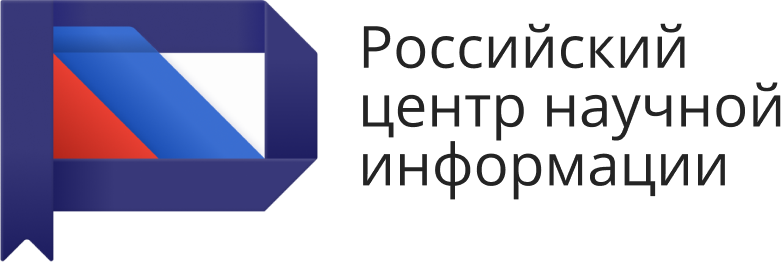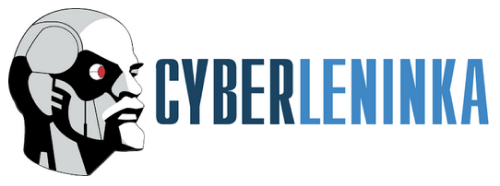Trends in the Development of the Institution of Intellectual Property in Ensuring Innovative Activities of Industrial Production
( Pp. 76-86)
More about authors
Kudryavtseva Svetlana S.
Dr. Sci. (Econ.), Assistant Professor; Professor at the Department of Logistics and Management
Kazan National Research Technological University
Kazan, Russian Federation Minulina Olga V. prepodavatel kafedry ekonomiki i organizacii proizvodstva
Kazan State Power Engineering University
Kazan, Russian Federation
Kazan National Research Technological University
Kazan, Russian Federation Minulina Olga V. prepodavatel kafedry ekonomiki i organizacii proizvodstva
Kazan State Power Engineering University
Kazan, Russian Federation
Abstract:
The purpose of the research. Development of methodological approaches to the study of the relationship between the state of the institution of intellectual property and the innovative activity of the industrial complex in the Russian context. Achievement of the goal is seen through the solution of the following tasks: Given a characteristic of the state of the institution of intellectual property in the model of open innovation; systematized the development trends of the intellectual property market in the Russian industry; modeling of the relationship between the development of the institution of intellectual property and innovation in industry has been carried out. Results. It has been established that the main source of remuneration in the intellectual property market is the innovation rent, which is the super-profits of the investor, innovator, innovation firm and innovation-active enterprise arising in the process of innovation diffusion. In this case, the sources of income can be: products and technologies, new business, specific assets, licenses, spin-off, subsidiaries, brands, individual stages of the innovation life cycle. In the Russian industry, there is an increase in patent activity, however, no stable dynamics in the development of the institution of intellectual property has been revealed. The level of manufacturability of production of industrial enterprises directly correlates with the level of intellectual property objects used and the applications filed for the issuance of titles of protection for the results of scientific and technical activities. There is no direct positive relationship between indicators of innovative activity in industry and indicators characterizing the state of the institution of intellectual property. However, time lags were revealed between the increase in the number of intellectual property objects used by industrial enterprises and the subsequent increase in the share of shipped innovative products - 3 years, as well as between the increase in the number of intellectual property objects used by industrial enterprises and the subsequent increase in the share of costs for technological innovation in general. the volume of shipped innovative products - 5 years.
How to Cite:
Kudryavtseva S.S., Minulina O.V., (2021), TRENDS IN THE DEVELOPMENT OF THE INSTITUTION OF INTELLECTUAL PROPERTY IN ENSURING INNOVATIVE ACTIVITIES OF INDUSTRIAL PRODUCTION. Computational Nanotechnology, 2 => 76-86.
Reference list:
Ershova I., Sevryukova L. Global development of information support of business organizations in the region // Globalization and its Socio-Economic Consequences 16th International Scientific Conference Proceedings. ZU - University of Zilina, October 5-6, 2016. Slovak Republic: Rajecke Teplice, 2016. Pp. 449-457.
Lamba K., Singh S.P. Big data in operations and supply chain management: current trends and future perspectives // Production Planning and Control. 2017. No. 28 (11-12). Pp. 877-890.
Marmo R., Nicolella M., Polverino F. A Methodology for a performance information model to support facility management // Sustaina-bility. 2019. No. 11 (24). R. 7007.
Nelson R.R. Bringing institution into evolutionary growth theory // Journal of Evolutionary Economics. 2002. No. 12. R. 45.
Otten W. Industry 4.0 and digitalisation What is the potential for the chemical industry // ATP Edition. 2019. No. 1-2. Pp. 28-32.
Shinkevich A.I., Kudryavtseva S.S., Rajskaya M.V. et al. Integral technique for analyzing of national innovation systems development // Espacios. 2018. Vol. 39. No. 22. R. 6.
Telukdarie A., Buhulaiga E., Bag S. Industry 4.0 implementation for multinationals // Process Safety and Environmental Protection. 2018. Vol. 118. Pp. 316-329.
Aung M. To, Abbas S.A., ZHukova N.A., CHernokul skiy V.V. Modeli upravleniya protsessami sbora dannykh v setyakh interneta veshchey s dinamicheskoy strukturoy // Computational Nanotechnology. 2020. № 3. S. 62-71.
Brizhak O.V. Institutsional nye i tekhnologicheskie dominanty doktriny vstraivaniya prostranstvennykh sistem v mirovuyu ekonomiku // Vestnik CHelyabinskogo gosudarstvennogo universiteta. 2019. № 9 (431). S. 65-71.
Glaz ev S.YU. Teoriya dolgosrochnogo tekhniko-ekonomicheskogo razvitiya. M.: ValDar, 1993. 310 s.
Kostyukhin YU.YU., Savon D.YU. Sovershenstvovanie otsenochnykh pokazateley rynka stali v usloviyakh usileniya konkurentsii // CHernye metally. 2020. № 4. S. 68-72.
Kudryavtseva S.S., SHinkevich A.I. Primenenie logisticheskogo podkhoda v modelirovanii otkrytykh innovatsii // Ekonomika, upravlenie i investitsii. 2014. № 1 (3). S. 6.
Medovnikov D.S., Rozmirovich S.D. Tekhnologicheskie koridory v proizvodstve potrebitel skoy produktsii i uslug // Forsayt. 2011. T. 5. № 1. S. 26-39.
Polterovich V.M. Strategii institutsional nykh reform, ili iskusstvo reform. M.: GU VSHE, 2007. 24 s.
SHinkevich M.V. Barsegyan N.V. Rol predprinimatel skikh initsiativ v sovershenstvovanii organizatsii proizvodstva predpriyatiy neftekhimicheskogo kompleksa // Vestnik Belgorodskogo universiteta kooperatsii, ekonomiki i prava. 2019. № 2. S. 358-369.
Lamba K., Singh S.P. Big data in operations and supply chain management: current trends and future perspectives // Production Planning and Control. 2017. No. 28 (11-12). Pp. 877-890.
Marmo R., Nicolella M., Polverino F. A Methodology for a performance information model to support facility management // Sustaina-bility. 2019. No. 11 (24). R. 7007.
Nelson R.R. Bringing institution into evolutionary growth theory // Journal of Evolutionary Economics. 2002. No. 12. R. 45.
Otten W. Industry 4.0 and digitalisation What is the potential for the chemical industry // ATP Edition. 2019. No. 1-2. Pp. 28-32.
Shinkevich A.I., Kudryavtseva S.S., Rajskaya M.V. et al. Integral technique for analyzing of national innovation systems development // Espacios. 2018. Vol. 39. No. 22. R. 6.
Telukdarie A., Buhulaiga E., Bag S. Industry 4.0 implementation for multinationals // Process Safety and Environmental Protection. 2018. Vol. 118. Pp. 316-329.
Aung M. To, Abbas S.A., ZHukova N.A., CHernokul skiy V.V. Modeli upravleniya protsessami sbora dannykh v setyakh interneta veshchey s dinamicheskoy strukturoy // Computational Nanotechnology. 2020. № 3. S. 62-71.
Brizhak O.V. Institutsional nye i tekhnologicheskie dominanty doktriny vstraivaniya prostranstvennykh sistem v mirovuyu ekonomiku // Vestnik CHelyabinskogo gosudarstvennogo universiteta. 2019. № 9 (431). S. 65-71.
Glaz ev S.YU. Teoriya dolgosrochnogo tekhniko-ekonomicheskogo razvitiya. M.: ValDar, 1993. 310 s.
Kostyukhin YU.YU., Savon D.YU. Sovershenstvovanie otsenochnykh pokazateley rynka stali v usloviyakh usileniya konkurentsii // CHernye metally. 2020. № 4. S. 68-72.
Kudryavtseva S.S., SHinkevich A.I. Primenenie logisticheskogo podkhoda v modelirovanii otkrytykh innovatsii // Ekonomika, upravlenie i investitsii. 2014. № 1 (3). S. 6.
Medovnikov D.S., Rozmirovich S.D. Tekhnologicheskie koridory v proizvodstve potrebitel skoy produktsii i uslug // Forsayt. 2011. T. 5. № 1. S. 26-39.
Polterovich V.M. Strategii institutsional nykh reform, ili iskusstvo reform. M.: GU VSHE, 2007. 24 s.
SHinkevich M.V. Barsegyan N.V. Rol predprinimatel skikh initsiativ v sovershenstvovanii organizatsii proizvodstva predpriyatiy neftekhimicheskogo kompleksa // Vestnik Belgorodskogo universiteta kooperatsii, ekonomiki i prava. 2019. № 2. S. 358-369.
Keywords:
industrial production, institute of intellectual property, innovation activity, objects of intellectual property, technological innovation, patent.
Related Articles

1. SCIENTIFIC SCHOOLS OF LOMONOSOV MOSCOW STATE UNIVERSITY Pages: 15-17 Issue №10553
GENE PATENTING: PHILOSOPHICAL, LEGAL AND ETHICAL GROUNDS
patent
the patenting of genes
biological sequence
Show more
PRIVATE LAW (CIVIL) Pages: 100-107 Issue №22019
Information Systems in the Context of Intellectual Property Law
database
blockchain
information system
copyright object
related rights object
Show more
3. FINANCE, CASH AND CREDIT 08.00.10 Pages: 92-97 Issue №17214
Development problems and ways to stimulate patent activity of Russian organizations
patent activity
intellectual property
patent
patenting
scientific and technological sector
Show more
private law (civil) Pages: 106-112 Issue №23832
Features of Computer Program Protection Under the Legislation of the European Union
computer program
copyright object
patenting
invention
patent
Show more
PRIVATE LAW (CIVIL) Pages: 138-143 Issue №24449
The Legal Regime of Protection of Computer Programs under the Legislation of China
computer program
copyright object
patenting
invention
utility model
Show more
3. CRIMINAL, CRIMINOLOGICAL, ADMINISTRATIVE AND OTHER MEASURES FOR COUNTERING CRIME IN CONTEMPORARY CONDITIONS (5.1.3.) Pages: 160-167 DOI: 10.33693/2072-3164-2022-15-6-160-167 Issue №22137
Objects of Nature in the System of Intellectual Property Rights
breeding achievements
results of intellectual activity
patent
criteria for legal protection
objects of nature
Show more
LEGAL REGULATION IN BIOTECHNOLOGY Pages: 199-209 DOI: 10.33693/2223-0092-2020-10-3-199-209 Issue №16874
Rules of international law regarding application of the results of scientific researches in the field of biotechnology (on the example of therapeutic and reproductive cloning and human gene editing) and their patent protection
soft law
genomic research
regulatory principles
patent
biotechnology
Show more
4. Employment Law; Right to social security; Land law; Natural resource law; Environmental law; Pages: 118-122 Issue №3884
FACTORS AND MODELS OF DEVELOPMENT OF SOCIAL INSURANCE OF WORKING MIGRANTS FROM COUNTRIES - MEMBERS OF COMMONWEALTH OF INDEPENDENT STATES
a foreign citizen
migration policy
migration registration
model of social insurance
illegal labour migration
Show more
LEGAL REGULATION IN BIOTECHNOLOGY Pages: 196-204 DOI: 10.33693/2223-0092-2020-10-2-196-204 Issue №16644
Some questions of legal regulation of bioprinting in Russia
doctrine “products of nature”
bioprinting
induced pluripotent stem cell
intellectual property
3D printing technology
Show more
5.1.3. PRIVATE LAW (CIVIL) Pages: 195-198 Issue №20773
The Content of Innovation and Innovation Activity in the Russian Federation. The Role of Civil Science in the Development of the Phenomenon of Innovation
civil science
innovation
innovation activity
investment activity
legal foundations of innovation
Show more










